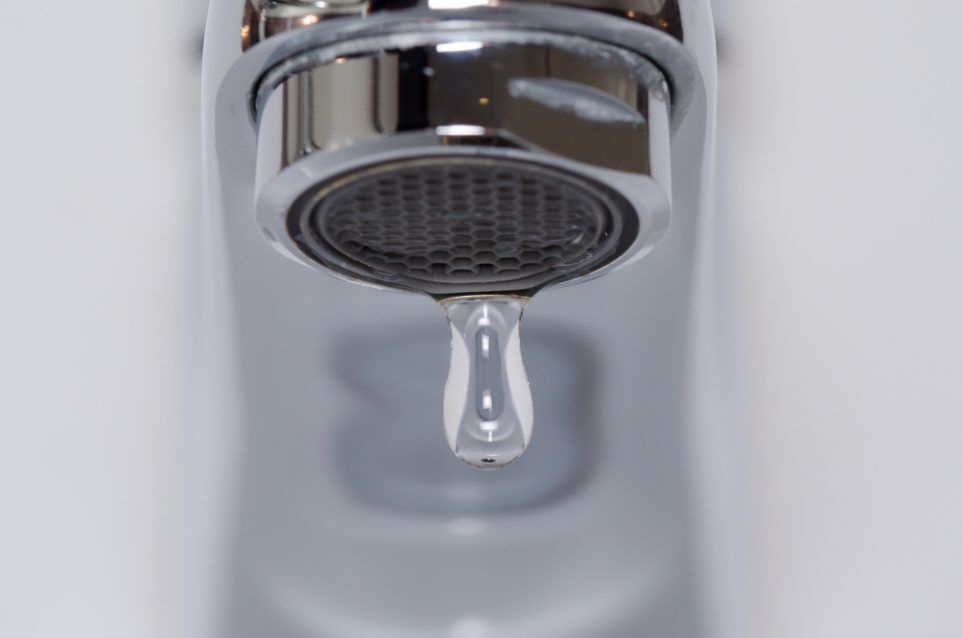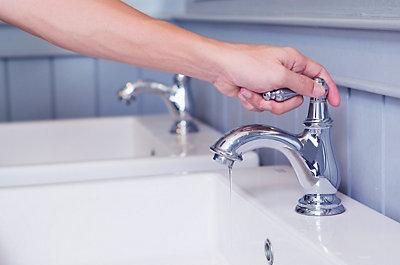Here down the page you can find additional first-rate additional info relating to Leaky Faucets: Why They Happen & What to Do About Them.

Leaking faucets might look like a minor aggravation, yet their effect exceeds just the aggravation of the audio. From wasting water to incurring unneeded financial prices and wellness risks, ignoring a leaking faucet can cause different consequences. In this short article, we'll explore why it's important to resolve this typical family problem quickly and successfully.
Waste of Water
Environmental Impact
Dripping taps add substantially to water wastage. According to the Epa (EPA), a single faucet trickling at one drip per secondly can squander more than 3,000 gallons of water each year. This not just stress water resources however also influences ecological communities and wildlife dependent on them.
Step-by-Step Guide to Dealing With a Dripping Faucet
Devices Needed
Before trying to deal with a trickling faucet, gather the essential tools, consisting of an adjustable wrench, screwdrivers, substitute parts (such as washing machines or cartridges), and plumber's tape.
Typical Tap Issues and Their Solutions
Identify the kind of tap and the details problem triggering the drip. Usual issues consist of damaged washers, corroded valve seats, or malfunctioning O-rings. Describe manufacturer instructions or on the internet tutorials for step-by-step support on fixings.
Financial Prices
Enhanced Water Expenses
Beyond the environmental impact, dripping faucets can inflate water costs considerably. The gathered wastefulness with time equates into higher utility expenses, which can have been stayed clear of with timely repair work.
Potential Home Damage
In addition, extended dripping can bring about damage to components and surfaces bordering the faucet. Water build-up can create staining, deterioration, and even architectural problems if left neglected, resulting in added repair expenses.
Health Worries
Mold And Mildew and Mildew Growth
The consistent existence of dampness from a dripping faucet produces an excellent environment for mold and mold development. These fungis not just compromise indoor air high quality however also pose health dangers, specifically for people with respiratory system problems or allergic reactions.
Waterborne Conditions
Stagnant water in trickling faucets can end up being a breeding ground for bacteria and various other virus, raising the danger of waterborne conditions. Contaminants such as Legionella germs flourish in stationary water, possibly leading to severe health problems when consumed or inhaled.
Do it yourself vs. Professional Repair
Pros and Cons of Do It Yourself Repair Work
While some might attempt to fix a trickling faucet themselves, do it yourself repairs feature their own collection of challenges. Without appropriate expertise and devices, DIY attempts can aggravate the issue or bring about incomplete repair work, lengthening the problem.
Benefits of Employing a Specialist Plumber
Hiring an expert plumber makes sure that the underlying source of the leaking tap is resolved properly. Plumbings possess the know-how and tools to detect and fix tap problems effectively, saving time and decreasing the threat of further damage.
Ecological Duty
Specific Contribution to Conservation
Taking responsibility for dealing with trickling faucets aligns with more comprehensive initiatives toward water preservation and ecological sustainability. Every person's actions jointly make a considerable impact on maintaining valuable sources.
Lasting Living Practices
By focusing on timely repairs and embracing water-saving habits, people contribute to sustainable living techniques that benefit both existing and future generations.
Preventive Measures
Normal Maintenance Tips
To avoid trickling faucets, carry out regular upkeep such as cleaning aerators, checking for leakages, and changing worn-out parts without delay. Furthermore, take into consideration mounting water-saving devices or upgrading to much more effective components.
Significance of Prompt Services
Dealing with trickling taps as soon as they're noticed protects against further water wastage and potential damages, inevitably saving both water and money in the future.
Effect On Building Worth
Assumption of Well-Maintained Residential Or Commercial Property
Maintaining a home in good condition, including addressing upkeep problems like dripping taps, enhances its regarded value and worth among potential purchasers or renters.
Impact on Resale Value
Features with well-kept plumbing components, including faucets, command greater resale values in the realty market. Resolving dripping faucets can add to a positive impression throughout property examinations and negotiations.
Conclusion
Dealing with a leaking tap surpasses plain convenience; it's an important step toward saving water, decreasing monetary expenses, and protecting health and wellness and property. Whether through do it yourself repair services or specialist help, acting to repair dripping taps is a tiny yet impactful way to promote responsible stewardship of sources and add to a healthier, much more lasting future.
Why Are My Faucets Dripping (And Can I Fix it Myself)?
Causes of a Dripping or Leaking Faucet
Whether you’re hearing drops of water falling and hitting a sink, or noticing water ooze out from the base of the spout, you shouldn’t ignore a dripping or leaking faucet. And, the good news is, sometimes you can fix the problem yourself.
In this article, we’ll review a few common causes of dripping and leaky. We’ll also walk you through some basic ways to find the problem and handle it without calling anyone — and let you know when to call in a pro.
But, no matter what the cause, or whether you can handle it on your own, the sooner you address it, the better.
Each drip may be a tiny amount of water. But, they all add up quickly. According to the U.S. Geological Survey, one faucet losing one drop every 20 seconds — five a minute — wastes around a liter of water every day, and 173 gallons a year.
Add in more than one in your house, and it’s a lot of water to waste. So, we’ll help you get to the bottom of things quickly.
Four Reasons Your Faucet May Be Dripping
Aerator is Damaged or Unseated Valve Seat is Corroded O Ring is Loose or Worn Out Part of the Assembly is Loose Aerator is Damaged or Unseated
If you unscrew the end of your faucet, you’ll find the aerator. It’s the little stem piece with a screen on it that shuts off the water circulation.
If it’s damaged, or if it’s not sitting right, it will allow water to pass through.
Valve Seat is Corroded
Next is the valve seat, which is connected to the washer. If the washer wasn’t in place correctly, then it could have ground against the seat. Over time, this damages the valve seat.
The problem could also be corrosion: Over time, the part has worn out, and it’s now allowing water to pass through.
O Ring is Loose or Worn Out
Since the o ring is only a small rubber gasket, it’s a common reason why the faucet is dripping. You’ll find it at the base of the faucet, and it’s there to keep water from coming out where it’s not supposed to.
However, it’s common for the o ring to wear out over time. When it does, you’ll notice a drip.
Part of the Assembly is Loose
So far, we’ve looked at a few small, specific parts. But, the problem could be anywhere in the assembly if something’s out of place.
Even if a part isn’t damaged, over time, it may have become loose or dislodged. It could be the parts we mentioned, or the aerator at the tip of the faucet, the stem itself,
Can I Fix a Leaky Faucet Myself?
Depending on the problem, and how handy you are, there’s a chance you can fix a leaky faucet without calling a professional. But, you do run the risk of making the problem worse.
If it’s a small drip, you can certainly try a few troubleshooting tactics. We’ll walk you through them in a moment.
But, no matter what, your first step should be shutting off the water coming into the faucet. You should find a shutoff valve under the sink on the pipes leading to it. Turn each one clockwise until they close tightly.
Next, make sure you have the right tools for whatever you’re attempting. It’s tempting to make do with what you have. But, you need the right ones for a reason: You’re often dealing with small parts that can break if you handle them carelessly.
If you’re feeling confident, here are some places to start.
Items Near the Tip of the Faucet
A few of the parts we mentioned — particularly the valve seat and washer — are located at the tip of the faucet where the water comes out. They’re easy to access, making it a good place to start.
Check the O Ring
To check the o ring, you’ll need to take off the spout at the base. It’s easiest on kitchen sinks with long spouts, versus the smaller, bulkier base on most bathroom sinks.
Either way, this can be tricky, so do it carefully and don’t force anything. If it’s not coming right off, you’re much better off calling in a pro than possibly breaking something.
For a kitchen sink, there’s usually a nut or coupling assembly at the base of the spout. These often slide off easily without using any tools.
Once you’ve disassembled those parts, gently but forcefully twist off the spout.
Then, you can see the o rings. There should be two of the rubber gaskets on the base. If they look worn or damaged, replace them, and see if that solves the problem.

I ran across that review on while doing a search on the internet. Make sure you take a moment to distribute this blog if you liked it. Many thanks for taking the time to read it.